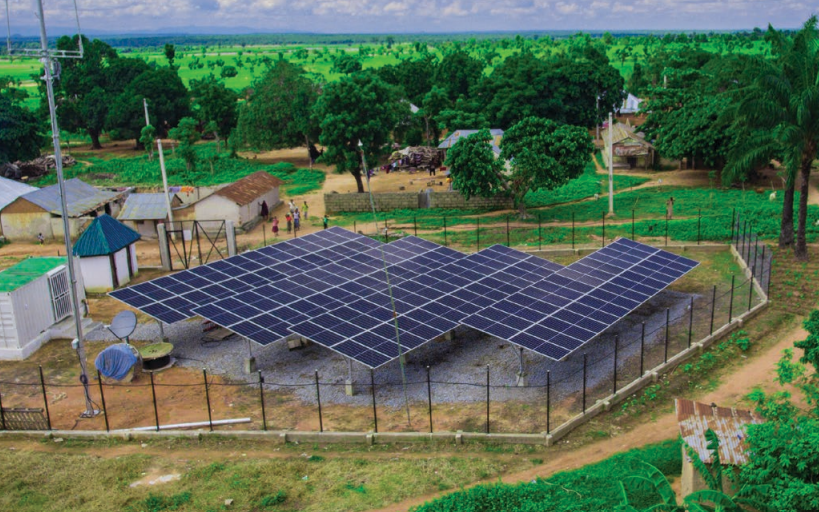Traditionally, mini grids have been viewed as “off-grid” systems that are built and operated solely for communities without electricity. The reality, however, is that millions of people in Sub-Saharan Africa and India who are connected to the main grid suffer from poor grid reliability (“weak grid”), sometimes with a power supply of less than 4 to 8 hours daily and with frequent disputes over the accuracy of billing. As a backstop, these poorly served customers often find themselves forced to rely on small fossil fuel–powered generators that are noisy, polluting, and expensive to operate.
“Mini Grid Solutions for Underserved Customers: New Insights from Nigeria and India” explores another option: undergrid mini grids. These are mini grids built and operated in a location served by an existing distribution enterprise (commonly referred to as a “Disco”) that is connected to the main grid, with which the mini grid may or may not be interconnected. These mini grids could provide valuable services to people living in communities equipped with poles and wires from conventional Discos that are providing inadequate services.
Interconnected mingrids as a triple win
Interconnected mini grids are likely to come into existence and be sustainable only if they can create a win-win-win outcome for retail customers, Discos, and mini grid developers. For customers, the mini grid must be able to provide affordable electricity that is more reliable and of better quality than the electricity they already receive. For the Disco, it must be clear that signing an agreement with an interconnected mini grid will increase its bottom line—by cutting financial losses, leasing its distribution network, and wholesaling electricity to the mini grid. For the mini grid company, it must be clear that the agreement (supported by credible government policy and regulatory decisions) will lead to a commercially viable interconnected mini grid with lower costs than a non-interconnected mini grid.
Benefits for retail customers
Mini grids almost always provide their customers with a more reliable source of energy than that provided by the Disco. In the absence of reliable grid electricity, customers are forced to operate their own backup electricity generation with expensive, noisy, and polluting diesel generators or to use candles or kerosene lamps for light. Before mini grids were installed, customers in the Wuse market in Abuja, Nigeria, relied on backup petrol generators for about half of their electricity. Thanks to mini grid uptimes exceeding 99 percent for the small section of the market currently served by the mini grid operator Green Village Electricity (GVE), the customers no longer need this backup. Mini grid customers in the Wuse market now pay about 65 percent less for energy services than they used to pay. Receiving electricity from a local mini grid may also improve the accuracy of billing, the response time for complaints, and the reliability and quality (voltage and frequency) of the electricity provided.
Benefits for the Disco
One determinant of whether connecting to a mini grid benefits a Disco is whether it had been serving the community at a profit or a loss. In a 2018 report, the Rocky Mountain Institute (RMI) estimated that a typical Nigerian Disco with 4,500 rural customers lost an average of US$0.21 per kilowatt-hour (kWh) (RMI 2018). In such circumstances, handing off money-losing customers to mini grids can be an attractive proposition to a Disco.
A second factor is the revenue the Disco may receive by leasing out its distribution grid. Mini grids in Nigeria’s Interconnected Mini-grid Acceleration Scheme (IMAS) are expected to pay a so-called Distribution Use of System (DUOS) charge of US$0.006–US$0.013 per kWh sold at the retail level.
Discos can also potentially earn revenues from bulk sales of electricity to interconnected mini grids. In Nigeria’s IMAS, bulk supply tariffs are US$0.067– US$0.135/kWh for nonfirm supply, whereas the Wuse mini grid pays US$0.11– US$0.17/kWh for firm power. The Abuja Electricity Distribution Company (AEDC), which previously served the Wuse market, estimated that its total revenues will increase by 70 percent once it becomes a wholesale supplier to the mini grid.
Benefits for the mini grid operator
Connecting to a main grid can bring benefits to the mini grid operator in the form of lower operating costs and capital costs. Mini grids can lower operating costs if the price they pay for electricity purchased from the local Disco is lower than the cost of supplying the same amount of electricity themselves. This is likely to be true for electricity that would be generated by mini grids during nonsunny hours, when the electricity must either be drawn from a battery or generated by a diesel generator. Capital costs can be lowered if the purchase of electricity from the Disco allows the mini grid to reduce its overall investment in equipment such as batteries, solar panels, and diesel generators. Savings vary widely depending on the price of diesel fuel, the price of electricity purchased from the Disco, the number of hours of Disco electricity supply, and the timing of supply. Assuming a diesel fuel cost of US$1.80 per liter, a duration of 6 hours, and a wholesale tariff of US$0.13/kWH, a mini grid with a firm supply agreement with a Disco can reduce its levelized cost of electricity by almost 20 percent, as compared with a project that is not connected to the main grid. Savings from interconnecting with a nonfirm supply are about 50 percent lower.
Excerpt of: Tenenbaum, Bernard, Chris Greacen, and Ashish Shrestha. 2024. Mini Grid Solutions for Underserved Customers: New Insights from Nigeria and India. International Development in Focus. Washington, DC: World Bank

